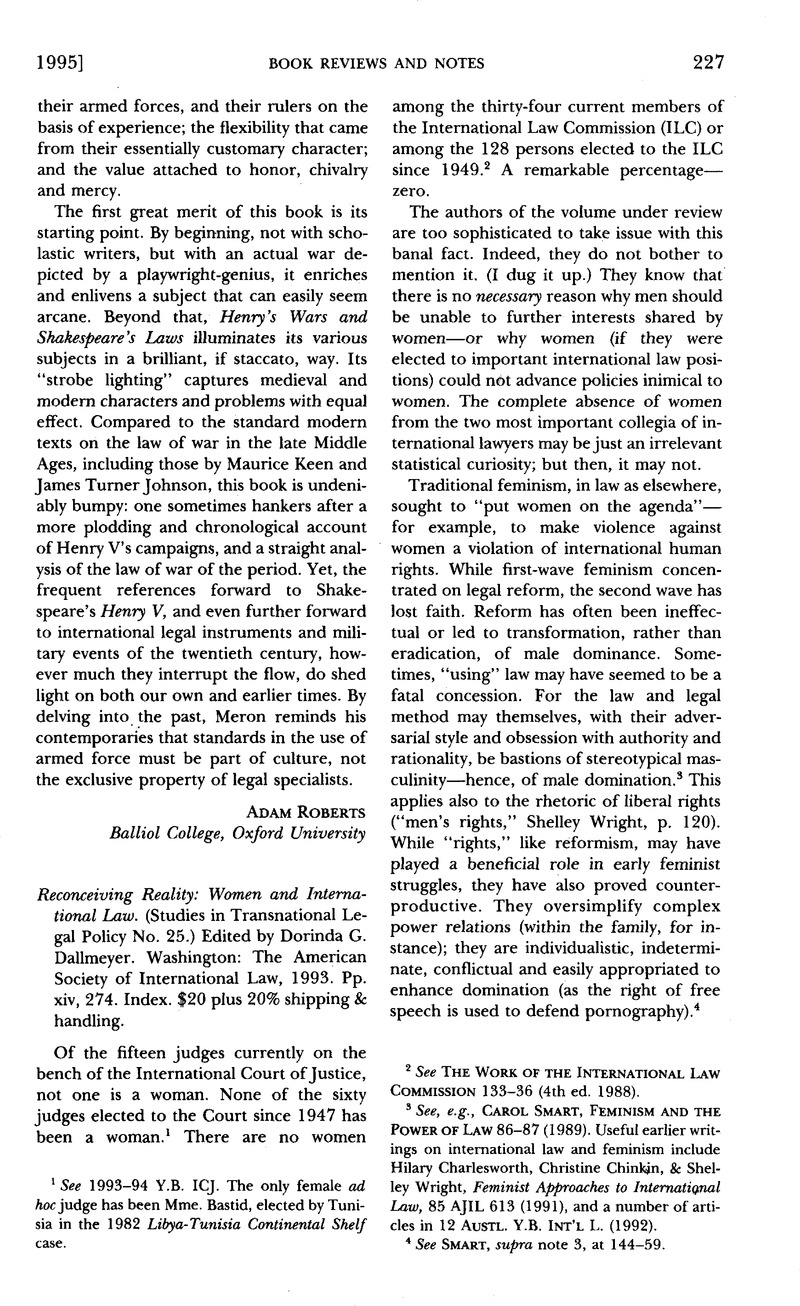Published online by Cambridge University Press: 27 February 2017

1 See 1993–94 Y.B. ICJ. The only female ad hoc judge has been Mme. Bastid, elected by Tunisia in the 1982 Libya-Tunisia Continental Shelf case.
2 See The Work of the International Law Commission 133–36 (4th ed. 1988).
3 See, e.g., Carol Smart, Feminism and the Power of Law 86–87 (1989). Useful earlier writings on international law and feminism include Hilary Charlesworth, Christine Chinkjn, & Shelley Wright, Feminist Approaches to International Law, 85 AJIL 613 (1991), and a number of articles in 12 Austl. Y.B. Int’l L. (1992).
4 See Smart, supra note 3, at 144–59.
5 For an analysis of the two strands of this internationalist mainstream, see David Kennedy, The International Style in Postwar Law and Policy, 7 Utah L. Rev. 7 (1994). For an earlier discussion, see Hersch Lauterpacht, The Grotian Tradition in International Law, 23 Brit. Y.B. Int’l L. 1 (1946).
6 See Deborah L. Rhode, Feminism and the State, 107 Harv. L. Rev. 1181, 1191–1208 (1994).
7 I am uncertain about the relation of this view to “liberal internationalism,” which also seeks to penetrate the formal veil of statehood and adjust a state’s legal position vis-à-vis other states by reference to the nature of its domestic political structure. See Anne-Marie Burley, Law among Liberal States: Liberal Internationalism and the Act of State Doctrine, 92 Colum. L. Rev. 1907 (1992), and Toward an Age of Liberal Nations, 33 Harv. Int’l L.J. 393–405 (1992). See also Fernando R. Teson, The Kantian Theory of International Law, 92 Colum. L. Rev. 53 (1992).
8 See, e.g., Mannaraswamighala S. Rajan, The Expanding Jurisdiction of the United Nations (1982).
9 Declaration of the UNSC Summit Meeting, UN Doc. S/23500 (Jan. 31, 1992), reprinted in 31 ILM 758 (1992).
10 Thus hinting, I suppose, at the possibility of enforcement action under chapter VII against patriarchal societies!
11 Cf. Catherine A. Mackinnon, Feminism Unmodified: Discourses on Life and Law 21–31 (1987).
12 See Martti Koskenniemi, The Politics of International Law, 1 Eur. J. Int’l L. 4, 27–32 (1990).